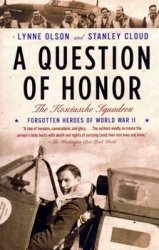In November 1917, a young American prep school teacher named William
Langer enthusiastically joined the army in order to fight in World War I.
Langer, later one of his country's most distinguished historians, noted in his
memoirs of the war how he and his comrades in Company E, First Gas
Regiment—"several college graduates . . . and for the rest an odd mixture
of older men, young lads, mechanics, salesmen and what not"—had all
volunteered. They went willingly into a conflict they knew was characterized
by "the murderous fighting on the Somme and around Verdun."
Motivated perhaps by patriotism, although they never discussed such feelings,
they were, as Langer recalled, drawn to the fight "simply fascinated
by the prospect of adventure and heroism."
i
Over the next twelve months, 2 million young men, volunteers and
conscripts, took the long voyage across the Atlantic, and, like Langer and
his buddies on July 13, 1918, landed in France. Members of the first
American army to fight on the continent of Europe, they personified the
vast changes that the United States brought to the war—and the changes the
war was bringing to the United States.
World War I brought the most dramatic and significant intersection of
American history and European history since the era of the American
Revolution. The great republic of North America had entered world affairs
tentatively at the turn of the century, but it now marched, in less than three
years from the outbreak of World War 1, to center stage in this epochal
struggle. The course of the war, and especially that of its final two years, is
comprehensible only with an eye to the role of the United States.
Moreover, war often accelerates existing trends in the life of a country,
and it can also turn a nation in a new direction. The American experience
in World War I stands as an intriguing example of such rapid transformation.
When war broke out in Europe, the huge country across the Atlantic was in
the midst of a great surge of industrial and urban growth, and it continued
to face traditional problems of racial division and the absorption of waves
of immigrants. Suddenly, these changes intersected with a novel involvement
of the United States in the affairs of Europe—with momentous
consequences for both Americans and Europeans.




 World History
World History









